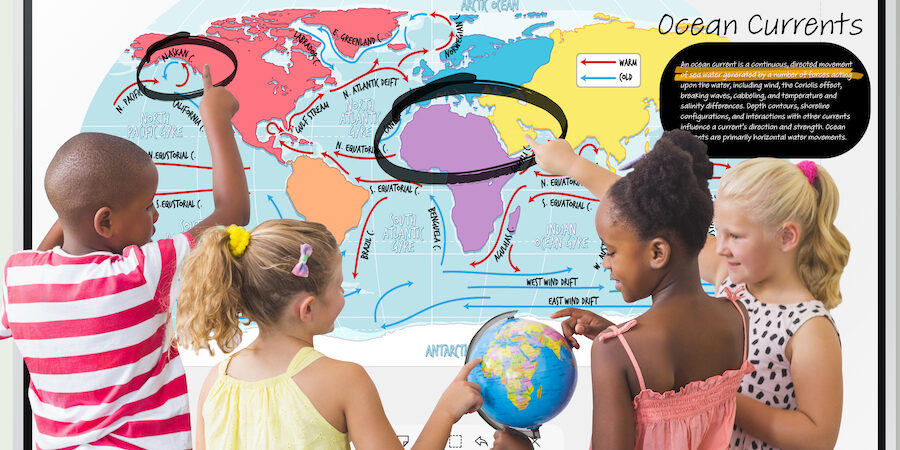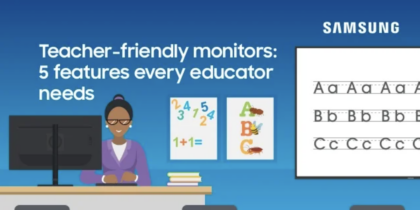Is there anything more heartbreaking than spending a week carefully writing notes on your students’ papers, handing them back and finding said papers crumpled up on your classroom floor after school? Not only did the student dismiss your notes, but you wasted your time writing them in the first place.
In this situation, it’s easy to think “I can’t believe them. They will make the same mistakes on the next assignment because they didn’t care about this one.” But overall, this is not a great approach if you consider how our brains best process feedback.
Your students stopped thinking about this assignment the moment they turned it in. Imagine answering a trivia question online and getting an email a week later telling you what the right answer was. Nobody cares at that point.
The traditional feedback cycle in the classroom needs an update. Teachers spend a huge amount of time providing feedback to their students. And if the feedback is not carefully formulated and given immediately, it may not result in much growth. As our classroom technology continues to evolve, it’s important that inefficient and ineffective strategies evolve with it.
This problem boils down to two questions:
- How do we limit long hours spent writing feedback?
- How can we help students utilize feedback for effective growth?
Timing matters
If students initially misunderstand a concept or skill, and they practice this concept with a mistaken understanding, it becomes much harder to correct because they now have to unlearn the wrong thing. The best way to help students with your feedback is to give it as quickly as possible. Immediate feedback is always best.
In a 2011 study published in Frontiers in Human Neuroscience, scientists in Germany sought to discover how timing of feedback affects learning. “Taken together, our data suggest that one of the reasons why delayed feedback is less effective … is interference arising from conflicting information of alternative rule sets held in working memory during the delay.” Whichever understanding occupies a student’s working memory is the one that will stick, so the sooner you can correct the problem, the better. Ask anyone the proper pronunciation of the word “gif” these days, and you will see how passionate people are about their (often incorrect) understandings.
Read the definitive guide on interactive displays
See how educators can create an inclusive learning environment with the right technology. Download Now
In a whole class model, my favorite way to give immediate feedback is to examine an anonymous example as a class. I will remove the student’s name from an assignment, display it on my interactive panel (either through the built-in browser or by casting an image from a document camera), and as a class, we will dissect their work and look for common mistakes. I can annotate their work to show strengths and weaknesses. Students benefit from seeing an example, especially an example written by someone at roughly the same academic level. I also love this strategy because it puts my students in the role of reviewer. It’s great practice for peer-editing and self-editing in the future. They become more comfortable looking for mistakes.
What is formative feedback?
The word “formative” gets tossed around quite a bit in pedagogical conversation. It’s most often paired with the word “assessment.” The idea here is that formative assessments help to measure student understanding so educators can adjust their strategies if needed. This is generally a frequent and informal process. This is also the way we should be talking about feedback. So often, teachers will write feedback like “Great Job!” or “Showing Improvement.”
According to a 2015 study by the American Psychological Association, only when the feedback contains specific and actionable notes can students use the feedback to grow. “Although providing feedback is a necessary first step, an assessment only becomes formative when the information fed back to the learner is used by the learner to improve future performance. Therefore, only feedback that is potentially useful to the learner is formative.”
Do not spend your time writing feedback that is not formative. Your notes should be specific and actionable. That is the only way it will be useful to your students.
A few years into my teaching career, my campus administrators began an initiative to help with student behavioral issues. They hired a third-party company to train the campus staff in how to build stronger relationships, create classroom routines and communicate expectations with students. It was a simple concept: Students who feel a strong relationship with their teacher are less likely to have behavioral issues.
They proposed simple strategies such as greeting each student by name as they walked into class. Additionally, they wanted teachers to create a measurable habit of positive acknowledgment. This could be as simple as placing a sticky note on the desk of a student who did something helpful, or as complex as tracking individual points for positive behavior using web tools like ClassDojo. Teachers were told to say three positive things to a student before giving corrections or critiques. During this time, I fell into the habit of complimenting a kid’s shoes or phone case more often than their academic growth. I began to conflate positive acknowledgments with valuable feedback.
Formative feedback enhances trust in a teacher-student relationship. Feedback is often given more consideration if the trust and relationship are already strong. So, classroom teachers should dedicate time and effort to building those relationships, but you cannot assume that the feedback you provide will have any effect unless it helps to grow student performance.
Guidelines for immediate, formative feedback
A multi-faceted response to our two problems will help to ensure teachers are giving feedback that will have an impact on their students:
- ASAP: If you can correct mistakes or misunderstandings as soon as they happen, that is optimal. This requires you to give the bulk of your feedback during class. The most efficient way to give feedback during class is to address possible errors with the whole class.
- Use a guide: A clear, concise rubric is an effective guide to help students understand the expectations of an assignment.
- Use mindful examples: Use examples created by students in the class (anonymously) so the class can practice comparing real work with a rubric. They will get better at looking for discrepancies between the example and the rubric, and in turn, they will be better able to recognize similar issues in their own work.
- Triage approach: Another way to save time is to narrow your focus while evaluating student work. You can select a subset of requirements to check, and leave the rest alone. If you write too many notes, it’s often overwhelming, and students are less likely to read them closely.
- Be specific and actionable: Make sure your feedback calls out a specific skill or concept your student did correctly or incorrectly. Avoid vague, positive acknowledgments.
Web tools to use for student feedback
If you ask 100 educators how they like to give feedback to their students, you are likely to get 100 different answers. Some will cite web tools and games that can offer real-time feedback asynchronously. Some will cite rubrics and comment features embedded into their school’s learning management system. Others will talk about the value of a face-to-face conversation. All of these answers, and dozens more, are valid.
There are tons of web tools that offer immediate feedback to students, such as Kahoot, Blooket, Quizizz and Quizlet. These tools can be used with the whole class or asynchronously. If you find yourself struggling to determine which web tools to use with your class, this guide should help.
A note for administrators
All of these principles outlined for student feedback apply to teachers as well. They deserve the same opportunity for growth, and that requires timely, specific and meaningful feedback. It also requires a strong relationship built on trust. The “Great job!” sticky note left on the teacher’s desk when you complete a walkthrough is not enough.
Our Samsung Education team is dedicated to helping your efforts as a curator for your classroom. Not only do we offer in-person professional development (PD), but we are always looking out for ways in which we can provide additional support throughout the school year. Check back each month as we offer more tools, ideas and resources to help teachers on their journey to offer the best experience for their students.
Learn more about Samsung’s education technology solutions that deliver engaging hybrid learning experiences in the classroom and beyond. And learn how interactive learning engages students and improves outcomes in this free whitepaper.








